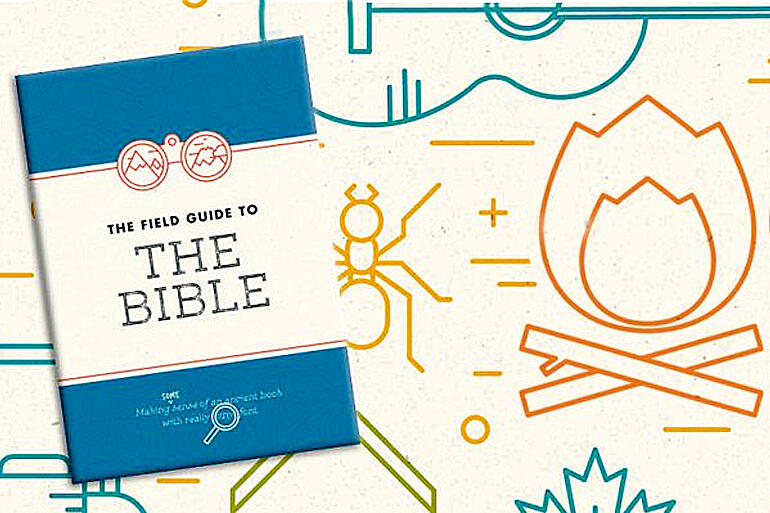
Book Review
The Field Guide to the Bible:Making Sense of an Ancient Book with Really Tiny Font.
Wellington, New Zealand: The Bible Society in New Zealand, 2018. $9.99.
Online orders: The Field Guide to the Bible
When I opened the Bible Society’s ‘Field Guide to the Bible’ with teenagers in mind, it reminded me of a conversation I had years ago.
A parent once told me how her daughter felt alienated in a Christian school because the teachers were talking about "NT" and "OT."
Her daughter didn't know what those abbreviations meant.
If this Field Guide to the Bible had been available at the time, it would have been the perfect thing for my friend to give to her daughter.
This friendly, inviting introduction to the Bible is a great resource for parents and youth-group leaders looking for an accessible way to introduce kids to the practice of reading the Bible.
The book contains five sections,
(1) What is the Bible
(2) Reading the Bible
(3) The Story
(4) Book Guide and
(5) Help Along the Way
Each of these sections is broken down into smaller units. One of the strengths of this guide is that it assumes no prior knowledge, making it a wonderful tool for working with school-age children or teenagers who are not familiar with the Bible.
This book asks the big questions, such as, “Why read the Bible at all?” and “What should I read first?” and “How should I think about the difficult parts of the Bible?”.
The book provides solid answers to all these questions that youth leaders and parents may want to use as starting points for group discussions.
With its creative and attractive design, featuring colourful page layouts and cartoons, the book invites the reader to highlight, take notes, and doodle as she reads through the material.
In this way, the book would make a good gift for parents to give their children, or for churches to buy for their youth leaders to use in a group.
Though the book itself is relatively short, it still provides helpful information, such as how to understand the numbers in a verse reference.
Section 3, on ‘The Story’, offers the reader an overview of the biblical narrative, and then recounts the history of the Bible using a friendly timeline.
Section 4, the Book Guide, provides short introductions to individual books of the Bible.
The final section, Help Along the Way, directs the reader to useful online resources where she or he can learn more.
This section also contains a brief discussion about different Bible translations and Bible FAQs. Especially useful for young people not familiar with the Bible, this section provides a list of passages to read when you have questions about various topics (such as the Holy Spirit, Jesus, prayer) or when you are feeling a certain way (ie. afraid, angry or discouraged).
One of the other key strengths of this book is that it is a particularly Christian introduction for young people.
Besides conveying basic information about the Bible, this book also intentionally connects reading the Bible to prayer, church and the spiritual life. For example, the book explains how Bible-reading can be done prayerfully and outlines the basics of lectio divina.
In conclusion, this book could be a great resource for parents or youth group leaders who want to help their children learn to read the Bible prayerfully as a way to hear the voice of God today.
Dr Katie Marcar is a lecturer in biblical languages at the University of Otago and is on the leadership team of ‘C&Q’ Anglican youth group run by All Saints’ for Dunedin City parishes.

















Comments
Log in or create a user account to comment.